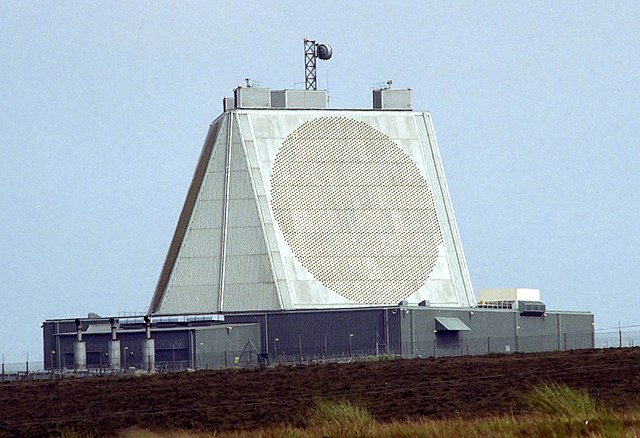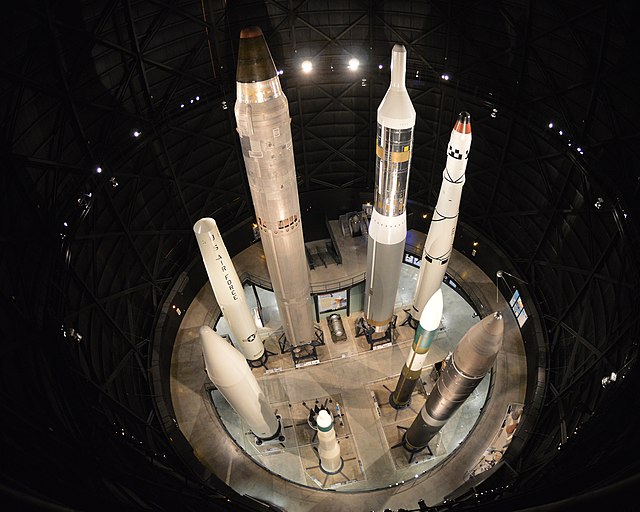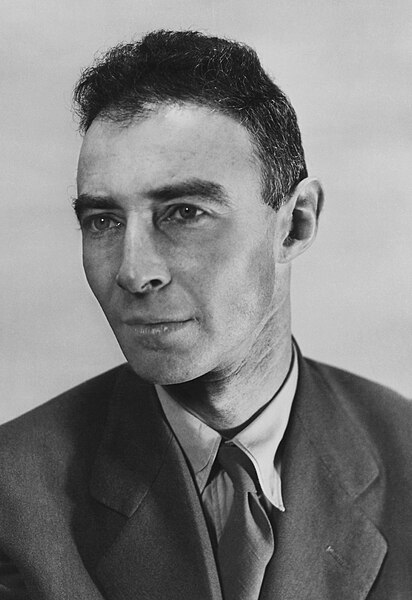Missile defense is a system, weapon, or technology involved in the detection, tracking, interception, and also the destruction of attacking missiles. Conceived as a defense against nuclear-armed intercontinental ballistic missiles (ICBMs), its application has broadened to include shorter-ranged non-nuclear tactical and theater missiles.
The Arrow 2 anti-ballistic missile
The Aegis Ballistic Missile Defense System. A RIM-161 Standard Missile 3 anti-ballistic missile is launched from USS Shiloh, a US Navy Ticonderoga-class cruiser.
Phased Array Ballistic Missile Early Warning System at RAF Fylingdales
India's Advanced Air Defense (AAD) endo-atmospheric anti-ballistic missile
A nuclear weapon is an explosive device that derives its destructive force from nuclear reactions, either fission or a combination of fission and fusion reactions, producing a nuclear explosion. Both bomb types release large quantities of energy from relatively small amounts of matter.
An assortment of American nuclear intercontinental ballistic missiles at the National Museum of the United States Air Force. Clockwise from top left: PGM-17 Thor, LGM-25C Titan II, HGM-25A Titan I, Thor-Agena, LGM-30G Minuteman III, LGM-118 Peacekeeper, LGM-30A/B/F Minuteman I or II, PGM-19 Jupiter
The Trinity test of the Manhattan Project was the first detonation of a nuclear weapon, which led J. Robert Oppenheimer to recall verses from the Hindu scripture Bhagavad Gita: "If the radiance of a thousand suns were to burst at once into the sky, that would be like the splendor of the mighty one "... "I am become Death, the destroyer of worlds".
J. Robert Oppenheimer, principal leader of the Manhattan Project, often referred to as the "father of the atomic bomb".
Edward Teller, often referred to as the "father of the hydrogen bomb"








